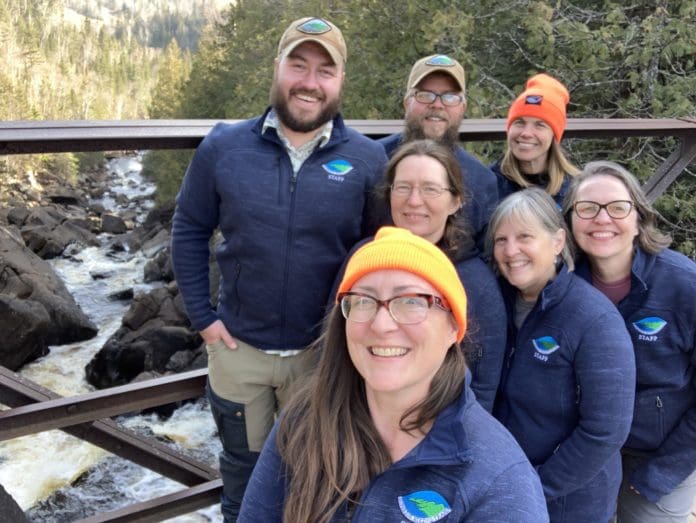(January 07, 2023, Two Harbors, Minn.) The full extent of the Superior Hiking Trail has been affected by the strong winter storms. Travel may be difficult to impossible along the entire corridor due to wind thrown trees and snow laden shrubs obscuring the path of the Trail for the remainder of the winter. In many circumstances it will also be very difficult to follow the Trail corridor. Exercise caution and be prepared for difficult winter conditions. If you are hiking and feel you have become lost, do not continue, turn around and follow your tracks back to safety.
If you decide to venture out, Superior Hiking Trail Association has the following tips for a safe snowshoe or hike this winter:
- The safety risks can be higher in winter. Cold weather and snowy or icy trail conditions make it even more important to plan ahead and prepare. Make sure someone knows your trip plan and when you plan to return.
- Bring your Ten Essentials. Bring items for navigation, insulation, illumination, nutrition, hydration, emergency shelter, sun protection, first-aid, making fire, and a repair kit
- Set achievable goals. Winter travel can be much slower and days are much shorter. Plan short trips until you know your pace and be sure to bring all the essentials in case something goes wrong.
- Wear snowshoes or stay on well-packed trail to avoid postholing. Postholing occurs in deep, wet snow when hikers without snowshoes sink into the snow, creating a hole. When the snow freezes later, these holes create a hazard for hikers coming behind you.
- Please stay off groomed ski trails. Cross- country skiers have a short season for their sport, so please respect their trails by staying off the groomed track where the SHT shares access with a ski trail.
- All trail rules still apply in the winter. Please stay on the Trail, leash and clean up after your pets, pack out what you pack in, camp only at designated campsites, and be respectful to fellow trail users.
- Dress for the weather. The weather conditions can change quickly and intensely. Check the forecast and wear and pack multiple layers so you can stay warm and comfortable in variable conditions.
- Stay hydrated.
- We don’t experience thirst the same way in winter. Make sure you remember to keep drinking water during winter treks. Bringing a hot drink in a thermos can also be a great treat for break time.
- Bring lots of calories. Our body works twice as hard to keep us warm during the winter. Fuel both for your trek and to help your body stay warm.
- Use caution near frozen water. Snow cover can hide holes in the ice. Please use caution when hiking near or on bodies of water during the winter.
- Don’t rely on digital devices. As helpful as digital maps and apps can be, cold weather drains phone and GPS batteries quickly. Always carry good ol’ reliable paper maps and guides.
- Stick to likely-plowed trailheads. A list is posted on our website. State and city park trailheads tend to be the most quickly and consistently plowed.
Please visit our Trail Conditions Page at https://superiorhiking.org/trail-conditions/ for more information on specific sections of the Trail and a list of parking lots that are most likely to be plowed.



